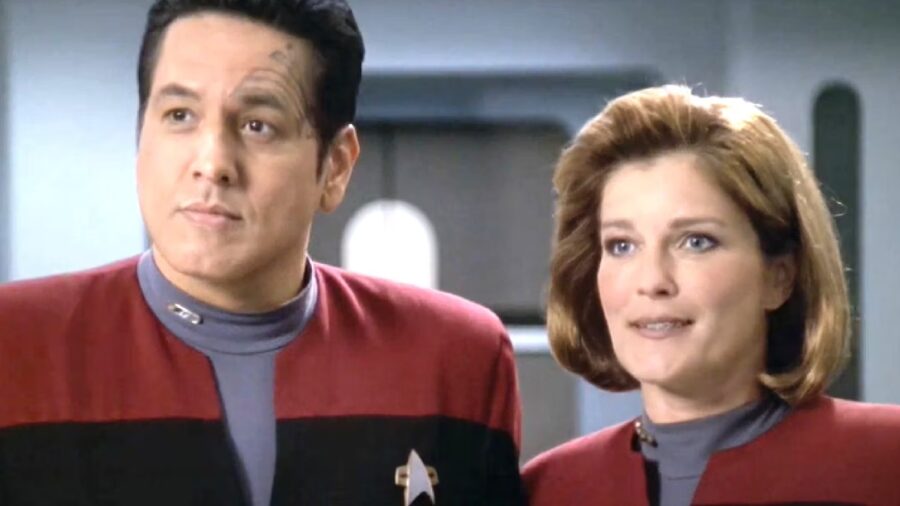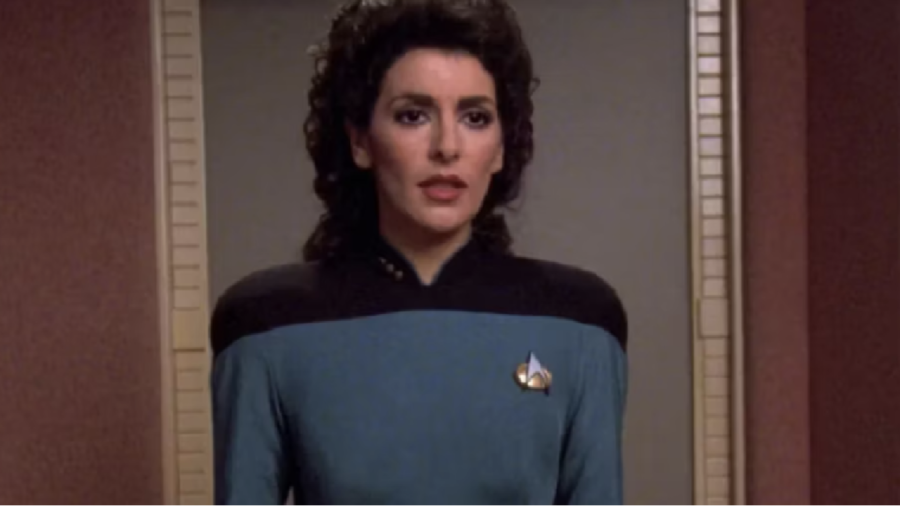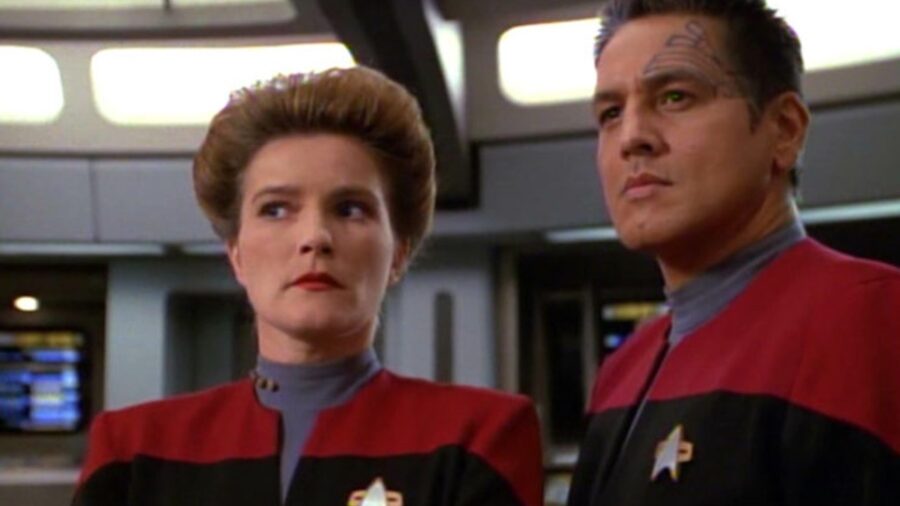The Star Trek Scene Inspired By Showrunner’s Actual Vision Quest

One of the more frustrating (and often accidentally hilarious) things about Star Trek: Voyager is that it frequently portrayed the Native American character Chakotay as going on strange vision quests.
Nothing is wrong with cultural representation, but these were over-the-top scenes that came as a result of consulting with a complete fraud of a cultural consultant. However, the vision quest in the Star Trek: Voyager episode “The Cloud” is unique because it was actually inspired by a real-life vision quest experienced by showrunner Michael Piller.
The Cloud Is A Weird Episode

To understand this crazy Star Trek story, we must first revisit the plot of the Voyager episode, “The Cloud.” Ostensibly, the main story of this episode involves the crew encountering, injuring, and then healing a kind of living nebula. In reality, most of the episode is taken up by charming side stories, one of which involves Chakotay helping Janeway discover who her animal guide is.
It’s worth noting that this is an early Star Trek: Voyager episode, and this strange storyline in “The Cloud” was meant to address the ship not having an official counselor.
Voyager Had No Counselor

While she was woefully underutilized by the show, Deanna Troi served as a professional counselor who could help the TNG crew deal with the inevitable trauma of multiple nearly-fatal Borg encounters, repeatedly dying in an endless causality loop, or (worst of all) having to regularly share shifts with known pervert Barclay. Voyager was stranded in the Delta Quadrant, and Janeway worried about the crew having no counselor to help them process trauma.
Inside Of You Are Two Bears

This is when Chakotay decides to tell Janeway in his Native American culture, everybody has their own animal guide (a kind of critter and counselor, all in one), and he volunteers to help her find hers. A remarkably game Janeway agrees, and this leads to a trippy vision quest sequence in which she finds herself on a beach.
In retrospect, the only thing weirder about this Star Trek scene is that Voyager showrunner Michael Piller inserted some of his own vision quest experience into “The Cloud.”
Janeway’s Animal Spirit Guide

According to Piller, he was once suffering major back problems and checked himself into a pain control clinic. He said that “the teacher basically led us on a visual exercise, and I found myself on a beach.” This is, of course, why Janeway finds herself on a beach when undertaking her own vision quest.
The other big similarity between the Star Trek showrunner’s real experience and what Janeway experiences in “The Cloud” is who her animal guide is. With Chakotay’s help, Janeway discovers that her animal guide is a tokay gecko. Piller says that during his own quest, “I looked and saw a small lizard, so that moment in the episode is a testimony to my own back problems.”
Voyager Used A Con Artist As A Consultant

With all that being said, Piller didn’t just ask the Voyager staff to recreate his own vision quest all on his own. He also consulted with the show’s Native American consultant, Jamake Highwater, who is the guy responsible for most of the awful Chakotay stories that don’t revolve around Seska.
You see, “Jamake Highwater” was born “Jackie Marks” and simply started pretending to be Cherokee in the 1960s; he had already been exposed as a fraud in the ‘80s, but this didn’t keep Paramount from hiring him to verify Voyager scripts for Native American accuracy.
One Of Many Stories Impacted By A Fake Expert

While the full story of this fraudulent Star Trek consultant is a tale for another time, “The Cloud” is just one of many Voyager stories involving vision quests and other Chakotay-centric plotlines that arguably misrepresented actual Native culture in a big way. In this episode, though, he’s not entirely to blame since Michael Piller really wanted to bring his own vision quest to life. Eventually, Janeway learned the same lesson Piller himself learned: when your animal guide speaks, it’s always important to listen.











